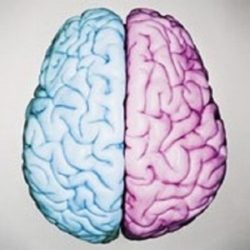When I went on an anti-inflammatory diet, or The Endo Diet, as some with endometriosis might call it, I had to cut out most of my favorite foods. One of the biggest complications was dessert.
Now, don’t get me wrong, I went through my detox and cut them out, all right! But after having excision surgery to remove the biggest majority of my disease, I decided to try reintroducing foods to figure out what triggered my symptoms, and which foods to eat again. I (thankfully!) found that chocolate was OK. Gluten, however, was not.
After a few failed attempts at using rice flour and all purpose gluten-free baking flour (note to the wise: if it contains garbanzo beans, it’s going to turn your sweets very bitter), I felt like my baking days were most certainly at an end. But then I found a recipe on Pinterest that opened my eyes to the many uses of sweet potato and avocado…in BROWNIES!
I bought all my ingredients, and went about making the recipe…except when I finished the dough, it was dry, clumpy, and bitter. Hm. Not the way I like my desserts. Containing healthy ingredients, like avocado, sweet potato, almond butter, and applesauce, was just not enough for me to overlook a bitter brownie. My sweet tooth is not that lenient.
So…I adapted. And OH! What a sweet, delicious, dense treat it was! So here, I bestow upon you, my recipe for:
The Dense, Divine, Anti-Inflammatory Diet Friendly Brownie!
(Psst…you can’t even taste the avocado!)
Ingredients:
(all organic, when possible)
1 cup sweet potato puree (about 2 small, or 1 large potato)
1 ripe avocado
1/2 cup almond butter
1/2 cup unsweetened applesauce
2 tbs vanilla extract
2 eggs
1/2 cup maple syrup OR raw honey*
1/2 tsp salt
1 tsp baking soda
1/2 cup rice flour
1/2 cup cocoa powder
1/2 cup vanilla rice milk
1/3 bag (or more if desired!) Enjoy Life chocolate chips**
Coconut oil spray
Directions:
Pre-heat your oven to 375*. Prepare a 9 inch brownie pan by spraying with coconut oil.
To make your sweet potato puree, bake your sweet potato(es) by poking several holes with a fork and microwaving on high for 3-4 minutes, or until soft. You could also bake them in the oven, but I’m impatient! Combine your sweet potato, avocado, almond butter, applesauce, eggs, and vanilla in a food processor, and blend until smooth and well incorporated.
In a small mixing bowl, combine the rice flour, salt, baking soda, and cocoa powder, whisking to incorporate evenly.
Mix your wet and dry ingredients in the bowl of your mixer. Start with your wet ingredients, and add the dry in 3 small batches on low (to avoid a giant mess!). Now, you can start adding the rice milk and sweeteners (maple syrup or honey). You may need to add more to taste. Finally, mix in your chocolate chips, and spread the batter evenly in your baking pan. Bake 30 minutes or until a toothpick comes out cleanly. I baked my batch in my convection oven for 35 minutes, and they were just slightly more done than I wanted. A couple minutes fewer and they would have been even more moist and divine!
Please try them out, share, adapt, and post your own creations! You can find more ideas for anti-inflammatory recipes on my Endo Diet Pinboard!
*you may adapt with your own sweeteners of choice. I tried adding Truvia until I read this and this. I think I’ll stick with the honey, thanks! Just add your sweet ingredients to taste, like I did 🙂
**LOVE this company! Try finding another chocolate chip on the market that doesn’t contain some form of dairy. Or soy. Or nuts! Or whose manufacturer is a verified non-GMO company.
Kelsey is an Early Childhood Educator and blogger from the Boston area. She chronicles her journey using sewing as a positive outlet while living with chronic pain and Stage IV Endometriosis. Diagnosed at 22, Kelsey has spent six years learning about her disease, and has recently become active in Endometriosis research and advocacy. She is a published poet who dreams of writing children’s books, and opening her own preschool that supports reading development. To read more about Kelsey’s daily dabblings in sewing, as well as recipes, preschool curriculum ideas, and information about endometriosis, visit her blog at www.silverrosewing.blogspot.com






































